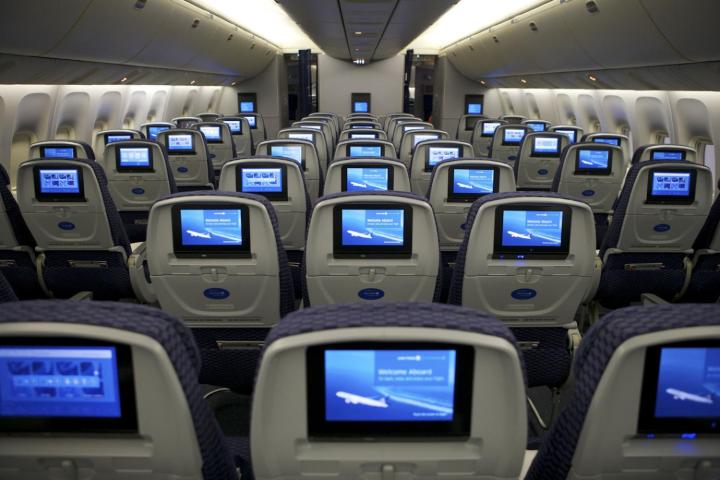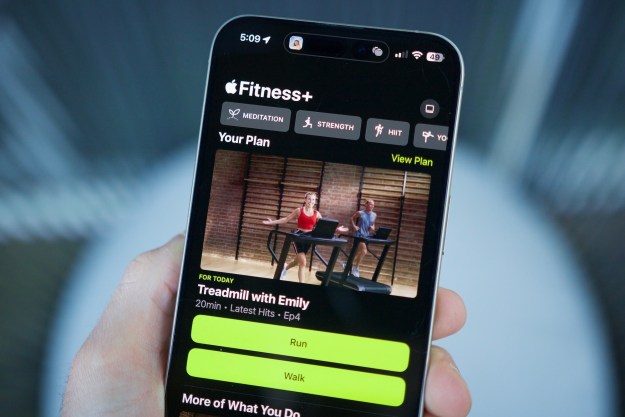
By now, having in-flight Wi-Fi onboard planes isn’t new. Many airlines offer the service on select routes, and some like Virgin America offer Wi-Fi on every plane. But besides letting you surf the Web or check your email, United’s new Wi-Fi service will be fast enough to stream entertainment to personal electronics like smartphones, tablets, and computers.
For travelers on these newly Wi-Fi-enabled United planes – with installations beginning later this year and completed next year; personal device entertainment will be added starting next year – it means they can kill some time in the air, whether it’s catching up on work messages or watching a movie. The download speeds aren’t exactly lightning-fast, but it will be enough to service planes that seat between 50 and 100 people (ATG-4 is currently in use on some of United’s larger Boeing 757 planes). You may wonder why anyone would pay for Wi-Fi and entertainment on short flights; although many of these small jets fly on routes of less than an hour, United does use them on flights that last more than 2.5 hours, such as the Los Angeles-to-Dallas route.

But for United, the Gogo Wi-Fi service not only provides new sources of revenue, it also allows the airline to quickly roll out in-flight entertainment (IFE) into planes that normally aren’t outfitted with seat-back IFE monitors. Such systems often require expensive, laborious installations and require planes to be taken out of service for some time, but on smaller jets, space and weight are also an issue. Having an IFE system that uses Wi-Fi not only saves the airline from having to install and maintain monitors in planes – instead, streaming content to devices passengers are likely to bring onboard anyway – but saves money on fuel (less onboard equipment and less weight allows the plane to burn less fuel) while potentially making more money from customers. United will most likely utilize Gogo Vision IFE, which Gogo describes as a lightweight technology that “offers significant savings on installs while reducing fuel burn. For aircraft already equipped with Gogo, Gogo Vision adds no more weight than a can of ginger ale.” Gogo also takes care of digital rights management and payment processing. Several airlines, such as American Airlines, Japan Airlines, U.S. Airways, and Singapore’s Scoot, are already using the system, which are easy to maintain and upgrade using USB flash drives.
The video above shows Virgin America installing Gogo’s ATG-4 Wi-Fi equipment on one of its planes. United will install the same equipment on its fleet of regional jets.
Wi-Fi and personal device entertainment aren’t just relegated to regional jets. United has already started implementing them in its larger mainline planes, but instead of the air-to-ground system, the airline is using a faster satellite-based Wi-Fi. Not only is the Wi-Fi more robust, but it also lets United offer uninterrupted service on international flights that fly over water. Eventually, United could do away with expensive installations of seat-back monitors altogether, and rely solely on Wi-Fi streaming to personal devices; in fact, some of United’s new Boeing 737 with Wi-Fi are equipped with seats sans monitors, but provide USB and AC power plugs for personal devices.

As mentioned, United isn’t the only airline that’s rolling out personal device entertainment (in fact, it’s one airline that was slow to the Wi-Fi game, but is now speeding up rollout). Delta had announced its plans back in 2012, and is also scheduled to finalize installation in 2015. And Gogo isn’t the only Wi-Fi service available; Panasonic Avionics’ eXConnect is another satellite-based service that United is using on some of its planes, like its trans-Pacific Boeing 747s. With nearly every airline adding Wi-Fi to their fleets, seat-back monitors may become a thing of the past.
As for consumers, they’ll need to start learning the acronym BYOD, or “bring your own device,” if they want to access a plane’s personal device entertainment service. It’ll be some time before seat-back displays disappear entirely, but it won’t matter – chances are, fliers are already traveling with the necessary gear anyway.



